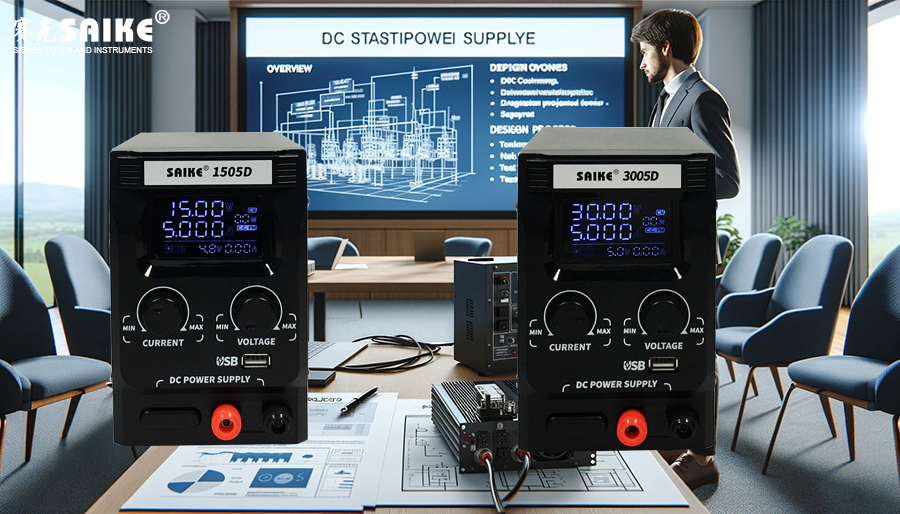
SK-YJ000ZLWYDY-KP 100022
Designing a DC stabilized power supply is a fundamental and critical task in electronic engineering, involving multiple technical and engineering fields. The goal is to provide a stable and reliable voltage output. The following are the basic steps for designing a DC stabilized power supply, which ensure the effectiveness and safety of the power supply and meet the needs of specific applications.
I. Definition of Requirements and Specification Settings
1.Determine the output voltage and current.
– Clarify the stable output voltage and maximum output current that the power supply must provide, such as 5V/1A, 12V/2A, etc.
2.Input voltage range.
– Determine the input voltage range that the power supply will use, such as from the AC power grid or different DC power supplies, ranging from 12V to 24V.
3.Efficiency goals.
– Set targets for power conversion efficiency, considering energy consumption and thermal management requirements in the application scenario.
4.Ripple and noise requirements.
– Set the maximum allowable values for ripple and noise based on the sensitivity of the equipment that the power supply will power.
II. Choosing Appropriate Voltage Stabilization Technology
1.Selection of voltage regulator type.
– Choose a suitable voltage stabilization technology (linear voltage regulator or switching voltage regulator) based on efficiency, cost, complexity, and space requirements.
2.Topological structure.
– Determine the applicable power topology, such as buck, boost, or buck-boost, based on the relationship between input and output voltages.
III. Circuit Design and Component Selection
1.Selection of key components.
– Choose key components suitable for the required topology and performance requirements, including switching elements (MOSFETs, IGBTs), inductors, capacitors, and voltage regulator ICs.
2.Circuit simulation.
– Use circuit design software for circuit simulation to ensure that the design meets all performance specifications.
IV. PCB Design and Layout
1.PCB design.
– Design the circuit board, optimizing the layout to reduce noise, minimize interference, and improve thermal management performance. High-frequency switching paths should be as short and wide as possible, and sensitive components should be kept away from high-current paths.
2.Thermal management.
– Design appropriate heat dissipation measures, such as heat sinks and adequate air circulation, especially for high-power switching regulators.
V. Prototype Production and Testing
1.Making prototypes.
– Produce power supply prototypes based on design documents.
2.Functional and performance testing.
– Conduct comprehensive testing on the prototypes, including stability, output ripple, efficiency, and thermal performance, to ensure that all design specifications are met.
VI. Iteration and Optimization
1.Problem analysis and resolution.
– Analyze test results, identify the source of the problem, and make corresponding adjustments to the design.
2.Repeated testing.
– Conduct a new round of testing on the modified prototype to verify whether the problem has been resolved.
VII. Documentation and Production Preparation
1.Preparation of technical documentation.
– Prepare detailed design documentation and production materials for the mass production stage.
2.Formulate quality control processes.
– Determine production and inspection processes to ensure that every product meets design standards.
These steps outline the complete process from demand analysis to production, and each step is critical to ensuring the successful design of a DC stabilized power supply.


